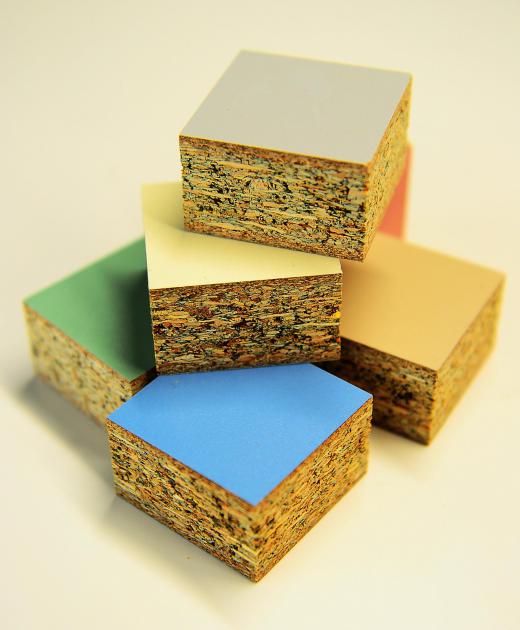Adhesive resin is a form of precursor plastic compound composed of caboxylic acids used to make plastics and adhesives for everything from dental work to pressed construction board compounds and everyday commercial glues. Much of the adhesive resin produced by the oil industry is targeted to construction material, such as urea-formaldehyde, which largely is used to bind together the components of particle board, fiberboard, and plywood. Urea-formaldehyde dominates the world market as an adhesive resin, and is used in over 80% of all products that require resins. As of 1996, over 1,000,000 tons of the compound were created worldwide annually.
The adhesive bond created by some resins is due to two primary chemical properties. The molecular structure of the polymer chains is intricately cross-linked, which gives them a durable structure. They are also a form of thermosetting plastic, which sets into a rigid form when heated and cannot be melted and remolded again. Epoxy adhesives are another form of resin based on the epoxide group, which is similar in structure to carboxyl resins, with an oxygen atom bound to a carbon atom with multiple molecular bonds.

Most adhesive resin compounds are polyolefins, the most frequent thermoplastic category made industrially, and are based on propylene to produce urea-formaldehyde, ethylene, pentene, and more. These resins can either be a no-mix adhesive used in their pure form as a bonding agent, or they are often mixed with wood fiber and pigments. This allows them to be ground into a powdered form that is transformed into a semi-solid glue like polymer when subjected to pressure and high temperatures, such as in the forming of particle board. One new type of adhesive resin under development in Canada, as of 2011, uses lignol based on wood fiber to create oriented strand board (OSB) that is widely used in the building trade as a more environmentally sustainable source of resin than from petroleum.

Packaging has also been making widespread use of adhesive resin because it demonstrates an ability to act as a barrier adhesive to prevent punctures and leakage, as well as form a sealed adhesive bond. Multi-layer plastic containers, such as ketchup bottles, or foods meant to be cooked in the container itself use several layers of different types of adhesive resin. They act as a barrier to bacterial contamination by sealing out air and water, and lock in the flavor and odor of the food. Similar processes are used to seal medical compounds and equipment or to maintain drugs and biological materials in a safe, sterile state until needed.

Adhesive cement compounds are a stronger version of standard resins, and bond well with several types of commonly used plastics, such as nylon, polystyrene, and polycarbonate, which gives them diverse uses. Automotive parts such as plastic gas tanks, valves, and fittings use adhesive cement, as it will bond to steel and aluminum parts well. Terpene phenolics are a class of adhesive resin used both in automotive and packaging applications, as they demonstrate a strong ability to bind to difficult materials, such as glass, and to metal film coatings on plastic in temperature-sensitive applications.
